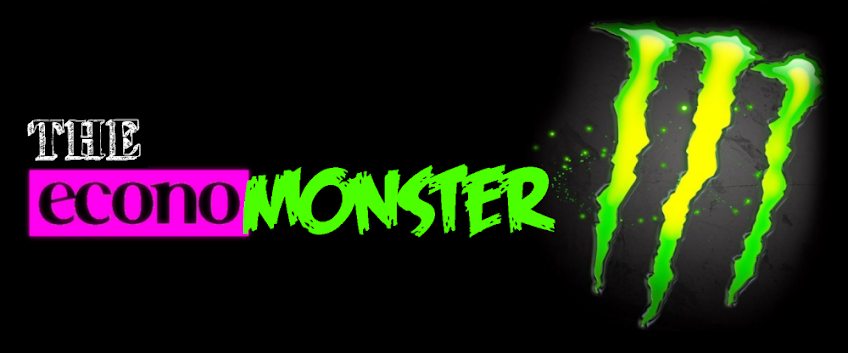On average, the quantity of 'Fairtrade' goods being traded in the UK has been doubling every 2 years. At least 20% of Bananas, Coffee and Chocolate sold in the UK are sourced from Fairtrade suppliers. And 7 million farmers in 58 countries globally benefit directly from the Fairtrade movement. However in economics it is rare for any form of market intervention, or on the other hand any abstinence from it, to be without its doubters.
The underlying problem that generates a case for Fairtrade setting a market price-floor, is that many firms have near-monopsony power over farmers, let’s use cocoa farmers as an example. This means that they possess a lot of bargaining power when negotiating prices for the cocoa they need to create their own chocolate with, as they are the only, or a very valued and significant customer for, the cocoa-farmer. Therefore, they are able to drive the price of the cocoa down beneath a free-market equilibrium, as the farmer essentially is a price-taker and has no power to ignore and rebuff unfair prices under the equilibrium price which they need to be fully satisfied, and would ideally only supply at (i.e. normal profits).
However Fairtrade artificially tries to eradicate this power imbalance, through setting a price floor on the market, as shown above using a supply and demand diagram.
This has the effect of creating excess supply in the Fairtrade markets, as the market is no longer in its free-market equilibrium. This excess supply may subsequently harm those markets that are not Fairtrade, reducing their demand and revenue; assuming that not all firms in the intervened market are under the shield of Fairtrade. Hence, those who are with Fairtrade benefit, but at the price of hurting those not aligned with Fairtrade, which may cause a less even distribution of income in such emerging economies on aggregate, which could be seen as unfair and inequitable.
However, price distortion is by no means definite. One counterargument against price distortion could be because this argument does not take into account the principles of product differentiation. Coffee, for example, cannot be compared to other commodities such as oil: there is not one single type of coffee but instead many different coffees that are differentiated from one another in terms of production techniques, seasonal or regional differences in quality, blending, packaging, handling, and now also "social responsibility". Therefore it could be that the market equilibrium for Fairtrade goods, which are perceived to be equal to the price of non-Fairtrade good + a social responsibility value by consumers, lie at a higher price-level, as consumers will pay more based on environmental and social responsibility claims. Hence although the price of Fairtrade goods may be higher, it is so because that is the markets natural equilibrium, and therefore excess supply does not necessarily exist.
Whatever the case, Fairtrade is a movement which is growing, evolving and encompassing food markets in particular. According to research by the Fairtrade foundation, 65% of consumers recognise and understand what Fairtrade is about, and are supportive of it. If they support it and understand it, it is likely that they will differentiate Fairtrade goods from others. However, will they buy both Fairtrade and non-Fairtrade products? That is unlikely. Therefore, as Fairtrade gains popularity, there must be a proportionate increase in the number of Fairtrade suppliers involved with it, otherwise the danger could be of crippling non-Fairtrade markets, not necessarily through ‘unfair’ prices, but through a simple lack of demand.
However Fairtrade artificially tries to eradicate this power imbalance, through setting a price floor on the market, as shown above using a supply and demand diagram.
This has the effect of creating excess supply in the Fairtrade markets, as the market is no longer in its free-market equilibrium. This excess supply may subsequently harm those markets that are not Fairtrade, reducing their demand and revenue; assuming that not all firms in the intervened market are under the shield of Fairtrade. Hence, those who are with Fairtrade benefit, but at the price of hurting those not aligned with Fairtrade, which may cause a less even distribution of income in such emerging economies on aggregate, which could be seen as unfair and inequitable.
However, price distortion is by no means definite. One counterargument against price distortion could be because this argument does not take into account the principles of product differentiation. Coffee, for example, cannot be compared to other commodities such as oil: there is not one single type of coffee but instead many different coffees that are differentiated from one another in terms of production techniques, seasonal or regional differences in quality, blending, packaging, handling, and now also "social responsibility". Therefore it could be that the market equilibrium for Fairtrade goods, which are perceived to be equal to the price of non-Fairtrade good + a social responsibility value by consumers, lie at a higher price-level, as consumers will pay more based on environmental and social responsibility claims. Hence although the price of Fairtrade goods may be higher, it is so because that is the markets natural equilibrium, and therefore excess supply does not necessarily exist.
Whatever the case, Fairtrade is a movement which is growing, evolving and encompassing food markets in particular. According to research by the Fairtrade foundation, 65% of consumers recognise and understand what Fairtrade is about, and are supportive of it. If they support it and understand it, it is likely that they will differentiate Fairtrade goods from others. However, will they buy both Fairtrade and non-Fairtrade products? That is unlikely. Therefore, as Fairtrade gains popularity, there must be a proportionate increase in the number of Fairtrade suppliers involved with it, otherwise the danger could be of crippling non-Fairtrade markets, not necessarily through ‘unfair’ prices, but through a simple lack of demand.
